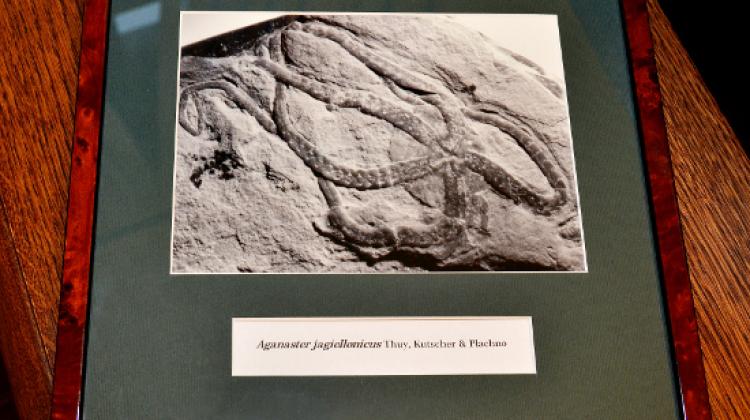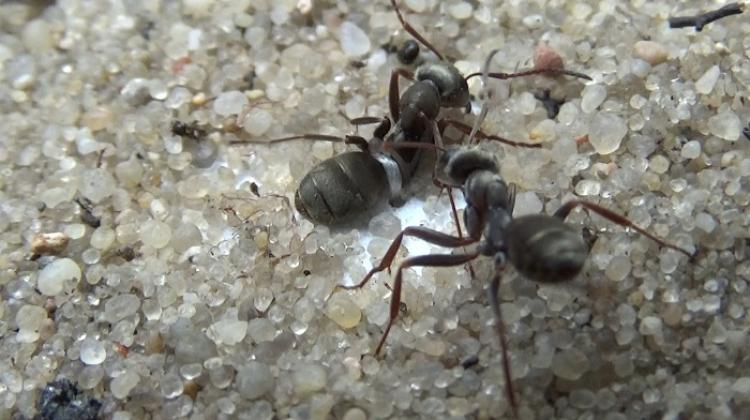Fossil ophiuroid - echinoderm similar to starfish - named in honour of the Jagiellonian University
 Source: www.uj.edu.pl, photo by Anna Wojnar
Source: www.uj.edu.pl, photo by Anna Wojnar
Species of brittle star - echinoderm closely related to starfish - has been named in honour of the Jagiellonian University. Aganaster jagiellonicus, whose fossil remains have been found near Kraków - could live on today’s Polish territory approx. 350 million years ago.
The new species of ophiuroid (brittle star) has been described in the journal "Acta Palaeontologica Polonica" by Dr. Ben Thuy (Natural History Museum Luxembourg), Dr. Manfred Kutscher (Cretaceous Museum, Sassnitz, Germany) and Dr. Bartosz J. Płachno (Faculty of Biology and Earth Sciences, Jagiellonian University). The brittle star comes from the early Carboniferous, approx. 350 million years ago.
As reported on the university website, Dr. Bartosz Płachno found the fossil about 10 years ago in the quarry in Czatkowice near Kraków. It was a nearly complete specimen, with unusually well-preserved details. According to the Jagiellonian University, specimens so well preserved are extremely rare, because after death brittle stars quickly disintegrate into small parts of the skeleton. Complete skeletons of brittle stars have been found before in Poland, but they were much younger specimens, from the Triassic period. Meanwhile, the discovery of Kraków researcher allowed for a detailed study of similarities between fossil brittle stars from the turn of Paleozoic and Mesozoic.
The discovered specimen (holotype) was transferred in the deposit of the Nature Education Center - Zoological Museum.
Brittle stars are echinoderms (like starfish, sea cucumbers and sea urchins) and live on the sea floor. These invertebrate animals usually have five radial, and resemble starfish. Their arms, however, are much thinner and longer, resembling the bodies of snakes. Brittle stars are also more mobile and move faster than other echinoderms.
PAP - Science and Scholarship in Poland
lt/ mrt/
tr. RL
Przed dodaniem komentarza prosimy o zapoznanie z Regulaminem forum serwisu Nauka w Polsce.


















